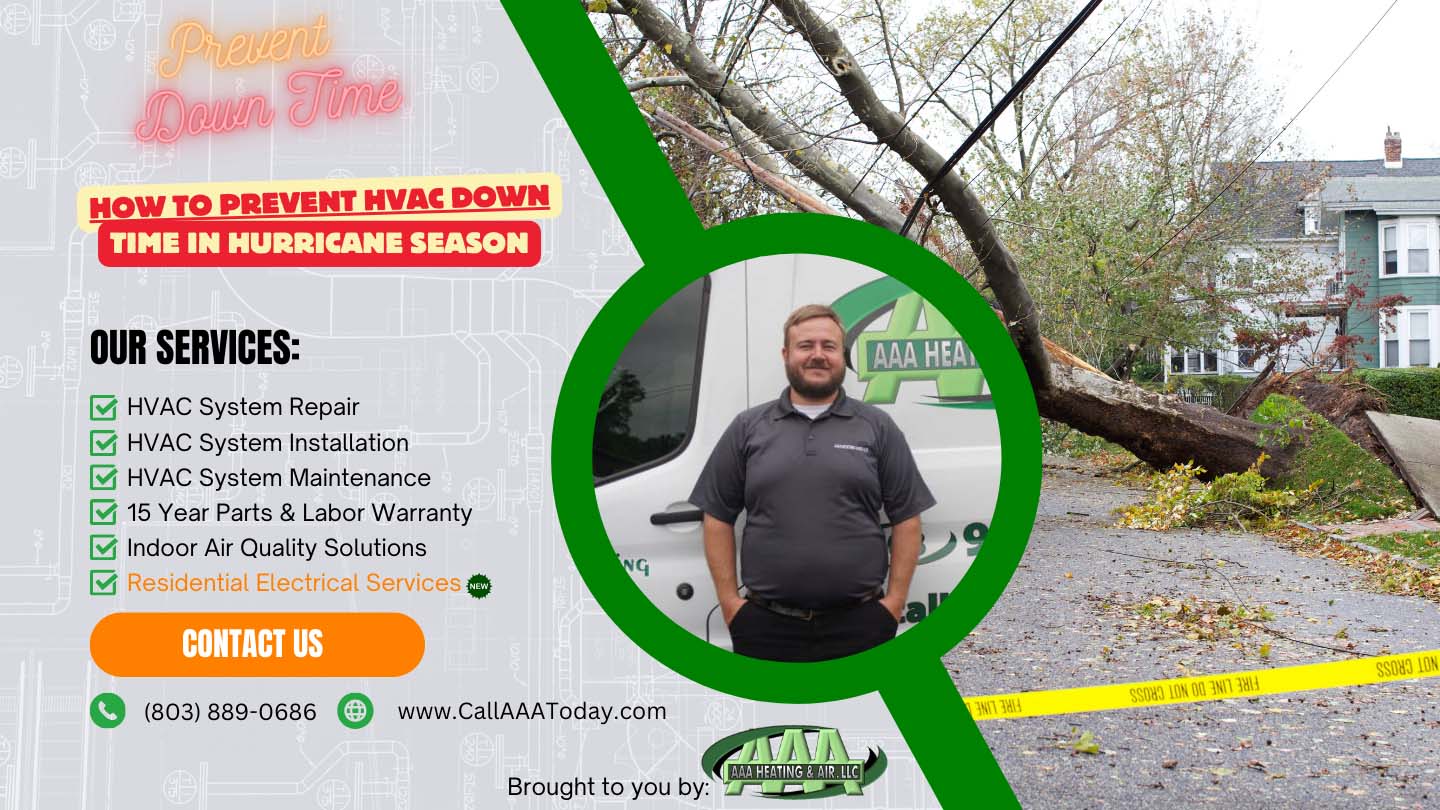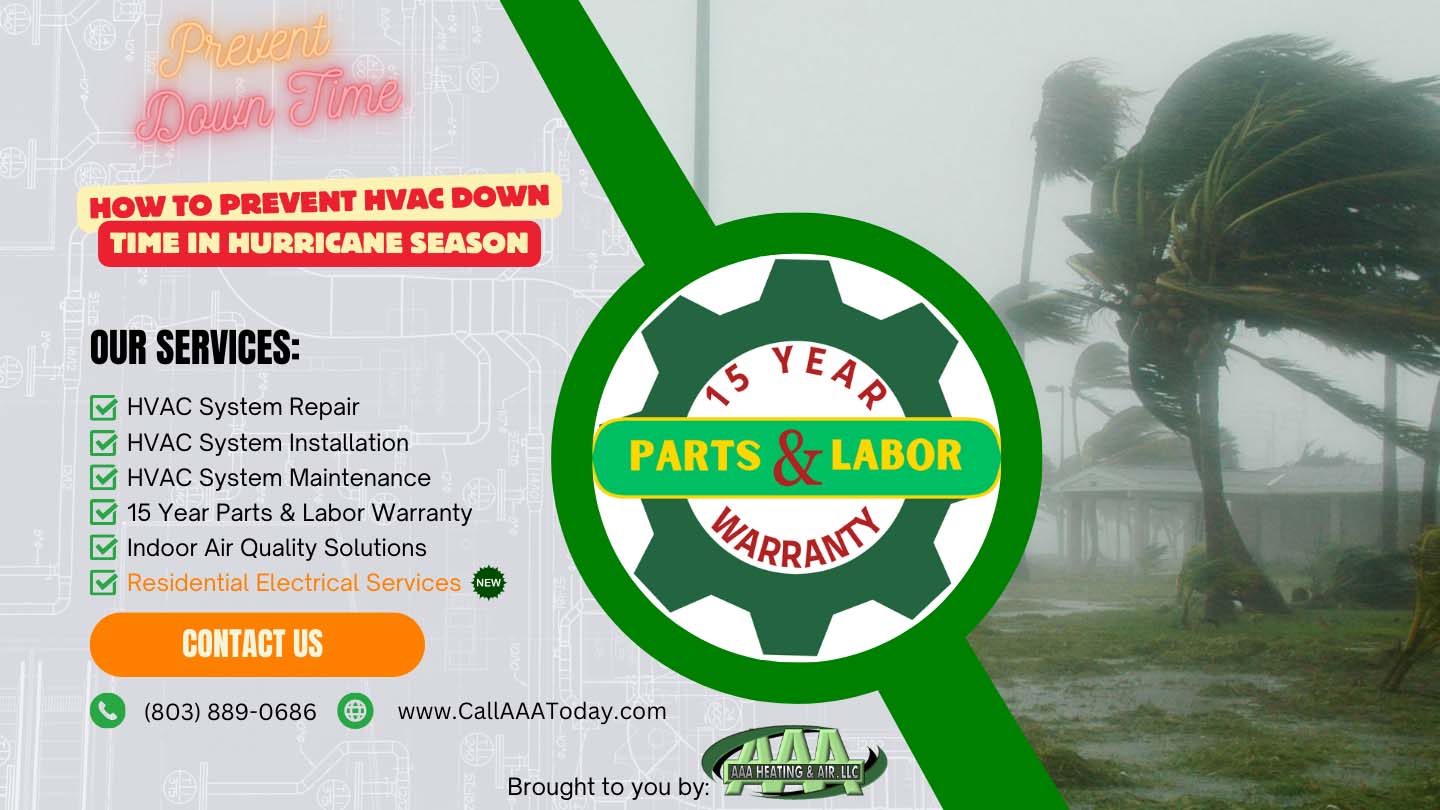As the winds of hurricane season begin to swirl, homeowners across hurricane-prone regions brace themselves not just for the storm but for the aftermath. One of the critical systems often overlooked in hurricane preparedness is the HVAC (Heating, Ventilation, and Air Conditioning) system. Ensuring your HVAC system remains operational during and after a hurricane can mean the difference between comfort and chaos. Here’s your comprehensive guide on how to prevent HVAC hurricane down time, tailored to keep your home’s heart beating through the storm.
Understanding the Risks
Hurricanes bring with them a trifecta of threats to your HVAC system: high winds, heavy rain, and flooding. These elements can lead to physical damage, electrical issues, or water ingress, all of which can cause HVAC hurricane down time. The key to resilience lies in proactive measures.
1. Pre-Storm Preparation
- Secure Outdoor Units: Your air conditioning unit, typically located outside, is most vulnerable. Use hurricane straps or tie-down kits to secure it to a concrete slab or the ground. This prevents the unit from becoming a projectile or suffering structural damage.
- Clear Debris: Remove any loose items around your HVAC unit. Debris can be hurled by high winds, causing dents or punctures in the unit’s casing.
- Check Drainage: Ensure that the drainage system around your home directs water away from the HVAC unit. Consider elevating the unit if your home is prone to flooding.
2. Protective Covering
- Weatherproof Covers: Invest in a durable, weatherproof cover specifically designed for HVAC units. These covers can protect against rain and minor debris but should be removed post-storm to prevent overheating.
3. Electrical Safety
- Turn Off Power: Before the storm hits, turn off the power to your HVAC system. This prevents electrical surges from damaging the system’s electronics. Remember to label the switch for easy identification.
- Check Wiring: Ensure all outdoor wiring is secured and insulated. Exposed or damaged wiring can lead to short circuits or fires.
4. Post-Hurricane Checks
- Inspect for Damage: After the storm, inspect your unit for any visible damage. Look for dents, cracks, or any signs of water ingress.
- Clean and Dry: Remove any debris from the unit. If water has entered, dry the system thoroughly before turning it back on to prevent mold growth or electrical issues.
- Professional Assessment: Sometimes, damage isn’t immediately visible. A professional check-up can catch internal issues that could lead to future HVAC hurricane down time.
5. Maintenance is Key
- Regular Servicing: Schedule a pre-hurricane season check-up. A well-maintained system is more resilient. Replace filters, check refrigerant levels, and ensure all components are in top condition.
- Emergency Contacts: Keep the number of a trusted HVAC service provider handy. Quick response can mitigate minor issues before they become major.
Conclusion
Preventing HVAC hurricane down time isn’t just about protecting your comfort; it’s about safeguarding your investment and maintaining your home’s livability post-storm. By following these steps, you’re not just preparing for a hurricane; you’re fortifying your home against one of nature’s most formidable forces.
Don’t let hurricane season catch you unprepared. Call (803) 889-0686 or secure your HVAC service HERE to ensure your system is ready for whatever the weather brings.
By integrating these strategies into your hurricane preparedness plan, you’re taking a significant step towards minimizing the risks of HVAC hurricane down time, ensuring your home remains a sanctuary, no matter how fierce the storm.

Written by: Jared M. Sewell

